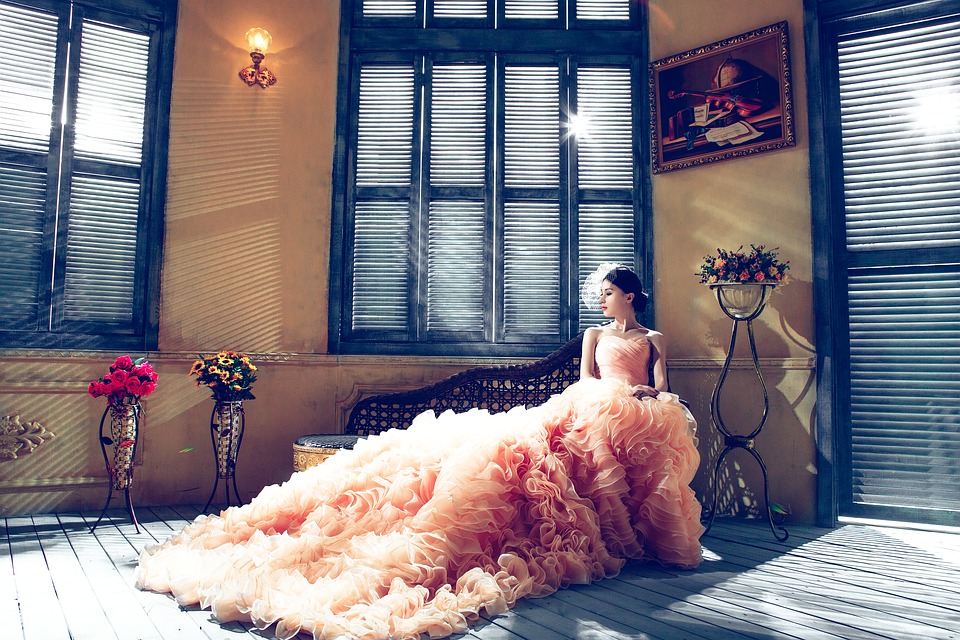The Secret Behind Your Dress Size

Wanna know a secret? Come closer because I don’t want everyone to hear this, I’m a little embarrassed. You see, there are a few clothing stores I shop at just because I can buy a smaller size. I’m pretty pleased with myself when I come out of the store. It makes me feel like I’m keeping fit. Yeah, that’s right, I’ve been working out. At least 10 times a day I’m bending over to pick up a toy or clean a mess. Did I say a day? I meant more like an hour. Obviously, it’s paying off.
That’s what I tell myself, anyway. We’ve all been there, haven’t we? It feels good picking up that smaller number. So what if you’re a size bigger at the shop next door: they just don’t know how to cut right. Well, sister, I’m here to tell you there’s more to this story than just bad cutting skills. Vanity sizing is the name and playing on our emotions is its game. There are companies who shrink their sizing numbers just to reel us into their stores. Impossible, you say? Industry standards and all that? Maybe once upon a time.
How it started

Way back in the late 1930’s Uncle Sam, having watched Robin Hood one too many times, decided he could be just as dashing and heroic as Errol Flynn. He would save damsels in distress from erratic clothing sizes. Women would come to his door, waving white linen hankies and throwing kisses as they thanked him for rescuing them from the evil clutches of unregulated dress manufacturers. Knowing his reputation was at stake, Sam set out to do things right. After all, he was getting kind of old, and not too many women were knocking on his door lately.
Sam, therefore, got the idea that he would scour the country for women whom he could measure. Once he figured out the commonalities of women’s bodies he would come up with a system to standardize those pesky dress sizes. He knew it was imperative that measurements be taken systematically and accurately so he trained an elite group of women to be measurement masters. After two to three weeks of intense training, they could wield their tape measures into 58 different positions, ensuring all 14,698 female volunteers were measured in the exact same way.
Who got measured?
Well, mostly white women. However “When it was found necessary for the sake of good feeling within a group to measure a few women of other than the Caucasian race, this fact was entered under remarks and the schedule [their measurements] later discarded.” You lost some points on your heroism score, Sam. So who else got measured? A lot of poor women volunteered due to the lure of financial compensation. Remember, the country was still trying to work its way out of the great depression in the late 1930s, so getting paid for your measurements was a pretty good deal. Not only were a lot of people financially strapped but also a tad underfed. Because of this, a lady’s figure might not be at its fullest, especially among the poor.
Like most things Uncle Sam undertakes, the results were confusing, to say the least. Sam banked on women’s bodies being predictably consistent. Unfortunately, his hopes were dashed to the ground like glass at a Jewish wedding. Sam realized that women’s bodies were all too different; they wouldn’t fit into his mold. Sam was confused.
So what happened?
Well, not much. Sam sat on his findings until the 1950s. Finally, he remembered his dream of being Errol Flynn to the country’s Maid Marians and bravely measured more women. This time he used women who served in the military during World War II. With these results, he grouped women into four different categories: Misses, Women’s, Half-sizes, and Juniors. These were then subdivided by height and bust-hip ratio. The variations in height and girth were fit into a chart and assigned random numbers thus creating the first scientific sizing chart.
It was perfect.
Except measuring women who had been in the armed services was kinda like measuring the poor and malnourished, not exactly representative of the population at large. Not a big deal though right, so what if a size eight woman had a 23.5-inch waist?
Grapefruit diet anyone?
Sam’s intentions were good, but in the end, not a lot of women were falling at his feet in admiration, You’re probably not surprised to learn then, that the standards were revised in the 1970s. They were dropped altogether in 1983. And that, my thigh gap loving friends, is how manufacturers were given the freedom to appeal to our dark side. The side that tells us happiness can come from a random number on a tag inside our dress. Manufacturers know a woman who tries on a size eight skirt in one brand and a size six in another is more likely to walk out of the store with the smaller size. I hate being predictable.
How much variation is there?

I did a quick check on five of my favorite stores and compared the waist measurements for a size two. Soft Surroundings came in at the smallest with a waist measurement of 25 inches. (And just to remind you the 1950’s standard for a size EIGHT was 23.5.) The Loft came in next at 25.5 inches, followed by Talbots at 26 inches. Pretty generous, right?
Well, hold on to your tape measure because it gets bigger. The Gap comes in at 26.5 inches. Still can’t quite wiggle into a size two? Well, try your luck at Chico’s. If your waist measures 27 inches, you can get out the door not with a size two, but with a zero! You read that right. Only thing is Chico’s has its own sizing so the tag will actually read 000. Yep, you can be 3.5 inches bigger than a 1950’s size eight and wear a triple zero. How’s that for flattery?
And the moral is…
The moral is it doesn’t pay to trust Uncle Sam.
No wait, that’s not it. The moral is it doesn’t pay to get hung up on your clothing size. Why do we care anyway? Garment sizes aren’t displayed on our chest for the world to see. No one says “Hey Kelly, I want you to meet Sheila, she’s an eight on the bottom and a six on the top… 34B after all.”
So remember happiness doesn’t come from a clothing size. Happiness comes with being thankful for the good things in your life, like healthy relationships and doing things you love.
And maybe chocolate.
Sources:
http://gsi.nist.gov/global/docs/vps/csfiles/cs_215-58.pdf
https://www.nal.usda.gov/exhibits/ipd/apronsandkitchens/items/show/14


Leave A Comment